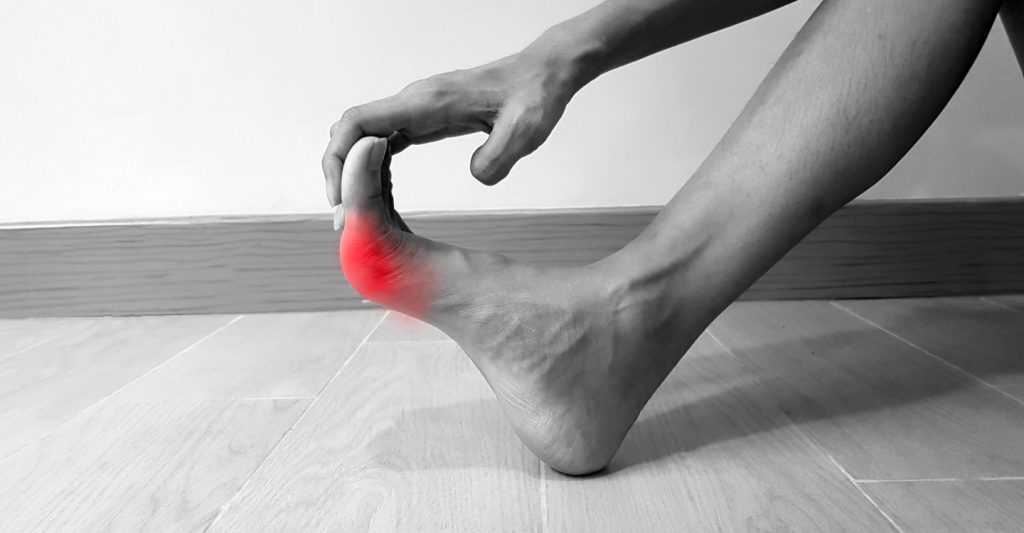Toes and feet conditions can have numerous causes ranging from poorly fitting footwear to excessive body weight to chronic abnormalities arising from improper development of foot and ankle joints. The disorders of the foot can be mild, needing only minor attention such as therapy or anti-inflammatory medication, but more severe disorders may need the attention of a physician and require surgical intervention to resolve the issue.
One common malady in the foot that affects more than fifty percent of women in the United States is bunions. Bunions are caused by excess pressure at the base of the great toe that causes the joint to enlarge and expand. As the expansion of the joint space continues the pain increases and causes additional issues within the capsule of the joint. The bursa that cushions the joint may also become inflamed resulting in additional pain caused by bursitis. Poorly fitting footwear is one of the most common culprits. Shoes that cause pressure in the area of the toes because they may be too small or cramped are the most common cause. Often this condition can be relieved by wearing shoes that allow the toes to remain in a more natural position.
Hammertoe is a condition in which the weakened muscles and pressure in the toes cause the toes to curl and hook forming them into a painful claw position. Hammertoes will cause foot pain while walking and can result from footwear that is too small or high heel shoes that force the toes into a cramped position. Treatment for hammertoes can begin with comfortable footwear that allows room for the toes to relax into a natural position. In addition, orthopedic physicians may recommend exercises that strengthen the muscles associated with the condition. When more conservative treatments cannot resolve the foot pain and condition, surgical intervention may be necessary.
Along with poorly fitting footwear, toes and feet conditions may be the result of abnormal development of bones in the feet. Tarsal coalition results when the tarsal bones located in the middle of the foot fuse together during childhood development limiting flexibility in the foot. Often this will result in a condition known as flat feet and can cause additional issues such as painful calluses and shin splints. Treatment and correction of tarsal coalition often include anti-inflammatory medication and surgical intervention.
References
Orthopedic Surgeons: Seven Things You Need to Know https://www.pennmedicine.org/updates/blogs/musculoskeletal-and-rheumatology/2019/december/ortho-surgeons-7-things-to-know



